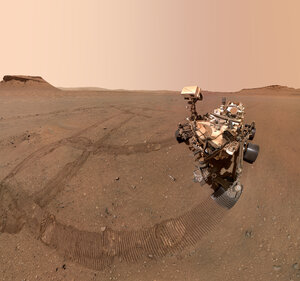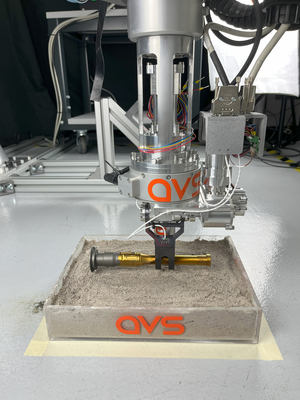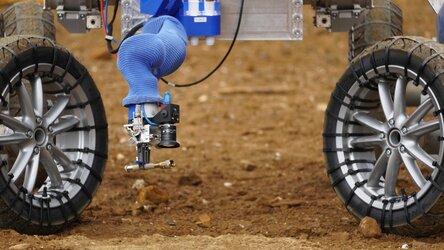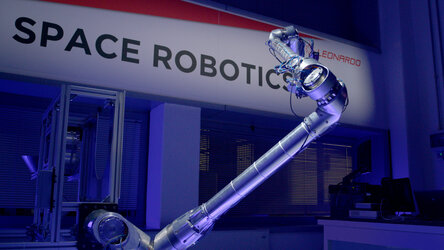
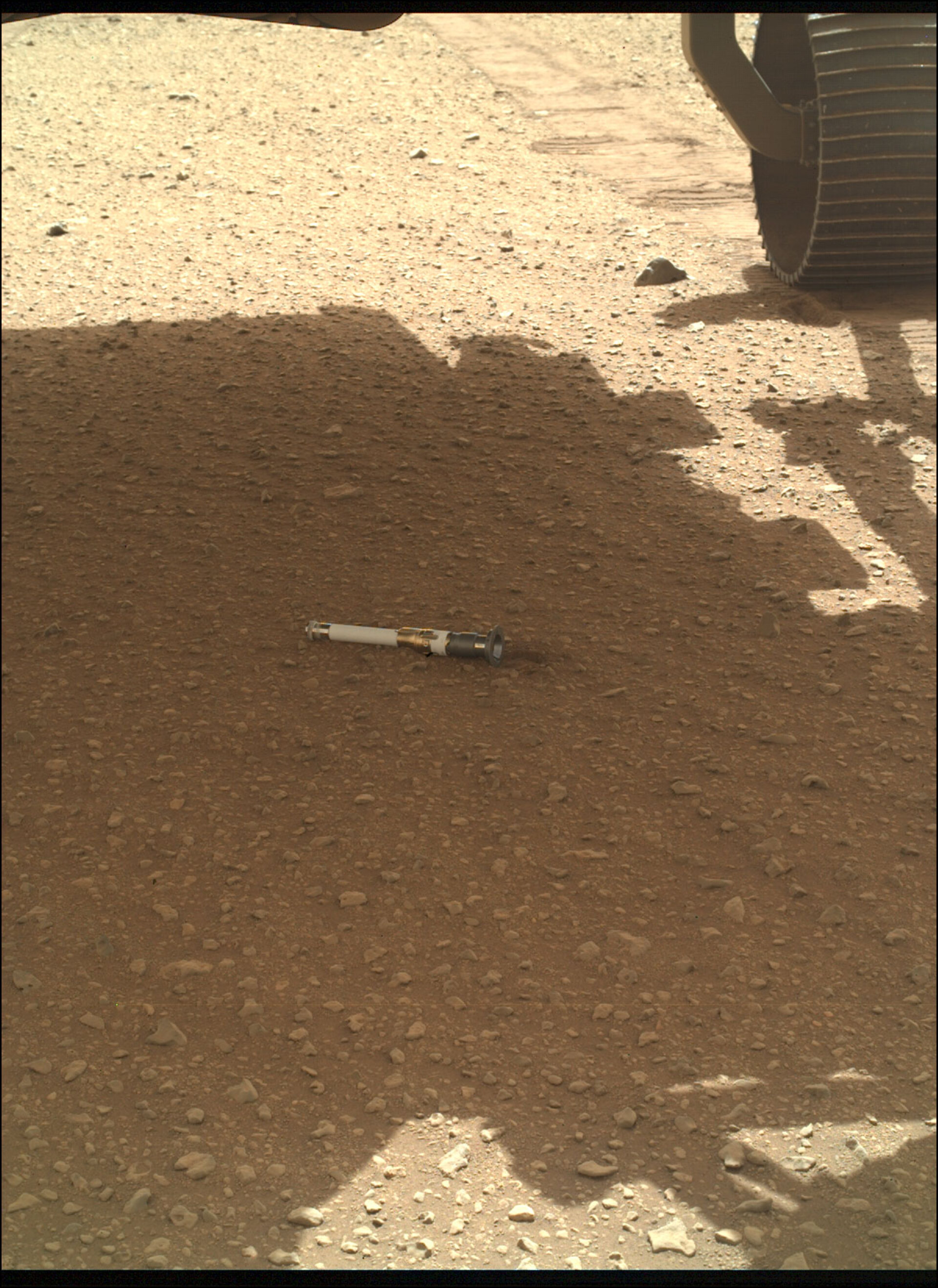
First sample depot on Mars
Europe’s next step towards exploring Mars hand-in-hand with NASA took place this week with a drop of a first sample tube, imaged above.
The Mars Perseverance Rover deposited the chalk-size core of igneous rock, taken from a region of Mars’ Jezero Crater in January 2022, that could be considered for a trip to Earth as part of the joint ESA-NASA Mars Sample Return (MSR) campaign.
The MSR campaign is made of several missions to return the first scientifically selected samples from the surface of another planet to Earth.
The plan is this: NASA’s Perseverance Rover, which has scouted 13 kilometres of the martian surface and acquired 17 rock and regolith samples and one atmospheric sample since its arrival in 2021, will deliver samples to the NASA Sample Retrieval lander (SRL). The SRL is quipped with an ESA 2.5 m Sample Transfer Arm and a rocket for launching the sample container into martian orbit. Once there, an ESA spacecraft will capture the container and bring it safely to Earth.
The backup plan is to create a depot of samples by early 2023, should the rover be unable to deliver the samples itself to lander in 2030. This reconfiguration of the campaign now includes two recovery helicopters that will be deployed from the lander to fetch the tubes.
The first of the 10 tubes that will make up the backup depot was deposited at a designated site called ‘Three Forks,” a carefully selected patch of the martian surface. Dropping the sample is a well orchestrated process whereby Perseverance retrieves the sample from its belly, inspects it with an internal camera, and finally drops it from roughly 90 centimeters onto the designated site. The process took the rover an hour.
Mission engineers not only needed to confirm the drop but also inspect the position of the tube using the camera on the rover’s robotic arm to ensure the tube landed on its side rather than its end and that it hadn’t rolled into the path of a rover wheel.
“Choosing the first depot on Mars makes this exploration campaign very real and tangible. Now we have a place to revisit with samples waiting for us there,” says David Parker, ESA’s director of Human and Robotic Exploration.
For all of the samples acquired so far, Perseverance always obtained two samples from each Mars rock – one sample to be left on the surface in the backup depot, and a second sample that is held within the belly of the rover to be directly transferred to NASA’s Sample Retrieval Lander.
“The first depot of Mars samples can be considered as a major risk mitigation step for the Mars Sample Return campaign,” points out David.
Watch a short animation featuring key moments of the Mars Sample Return campaign: from landing on Mars and securing the sample tubes to launching them off the surface and ferrying them back to Earth.

